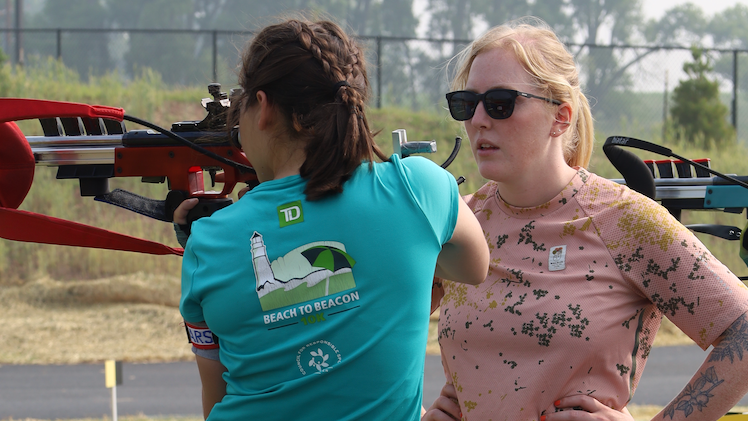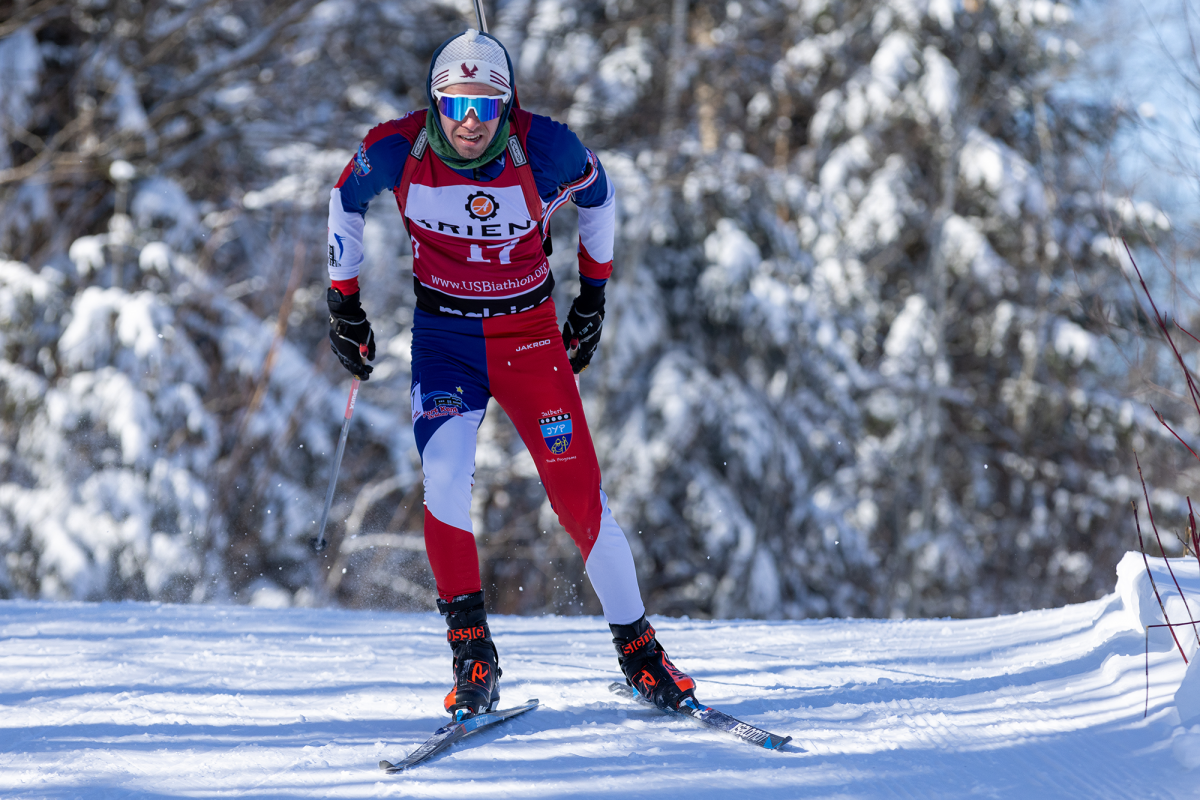
On Friday morning at 9:30 a.m., the United States will hold its first World Cup race since 2004.
The IBU World Cup circuit will be making stops in Presque Isle, Maine, this weekend, and then in nearby Fort Kent next weekend. While it might take almost as long to get to “The County” from the U.S. as from anywhere else, the races should be spectacular. If you can’t make it to Maine, the event will be broadcast live by Eurovision and the International Biathlon Union, and can be watched online on the IBU website (click the “BiathlonWorld TV” link).
Either way, there’s no reason not to skip off work a little early on Friday afternoon and watch the best biathletes in the world race around in our own time zone. Here’s a brief guide to what to watch.

1. World Cup Overall Leaders – and Contenders
One of the biggest questions of the next two weekend is whether the current overall World Cup leaders can hang onto their yellow bibs. 22-year-old Tarjei Boe of Norway leads his teammate Emil Hegle Svendsen by just six points going into this batch of races. Boe has worn the yellow bib since mid-December, but hasn’t won a World Cup since the first weekend in January. To keep his lead in the standings, he will have to beat Svendsen consistently – no small feat, considering that Svendsen has three victories to his name already this season, bringing his career total to 19, and was recently added to the Norwegian team to cross-country World Championships. He’s fast.
On the women’s side, Kaisa Makarainen of Finland has worn the yellow bib since the very first weekend of World Cup competition in Oestersund, Sweden. But the only two victories of her career came that weekend, and since then she’s been less impressive. Her lead over Helena Ekholm of Sweden has dwindled to just 14 points, and Germany’s Andrea Henkel is making a charge at the title as well. Ekholm, the 2008/2009 overall World Cup winner, has two victories so far this season. Henkel has none, but she’s been on the podium more consistently than almost any other woman, and could finally win a race at any point.

2. The Norwegian Men
It’s impressive enough that Norway has both of the top contenders for the overall World Cup on their team. But Boe and Svendsen certainly aren’t the only Norwegian men who could win in Presque Isle and Fort Kent. No less than four of the team’s biathletes have collected victories on the World Cup circuit this year: Boe, Svendsen, Lars Berger, and of course, 37-year-old living legend, 92-time World Cup winner, and six-time Olympic gold medalist Ole Einar Bjorndalen. The team didn’t appear to be in top form at the last few World Cups in the Alps, but people, including Swedish Olympic gold medalist Bjorn Ferry, hypothesized that they were suffering from the effects of altitude. Back close to sea level, any one of the four could win again.
3. Tora Berger
While the Norwegian men had lackluster results in the Alps, their teammate Tora Berger (Lars’ sister) did not. She won two races in Ruhpolding, Germany, and then another two in Antholz, Italy, and appears poised to make a late-season run through the rankings. Berger’s ski speed is so fast that it sometimes straight-up demoralizes the competition. FasterSkier hopes that there isn’t a third Berger sibling, who would undoubtedly suffer from incredibly low self-esteem.
4. The Russians
In the first period of World Cup racing, the Russians were completely uninspiring. But then, gradually, they reappeared in the spotlight. In Antholz, the women raced to a dominating victory in the relay. After that effort anchor leg Olga Zaitseva, who has won one World Cup on her own this season, told IBU News that “We are back.” Anton Shipulin was also on the podium twice in Antholz, and seems to be rounding into form. It would be surprising for the Russians not to be skiing fast, considering that they are hosting World Championships in a few short weeks and will without a doubt be at their best in front of the home crowds.

5. Bjorn Ferry
Ferry is one of the most boisterous media personalities in the biathlon world: he has a great sense of humor and strong opinions. At one point, the 6′ 4″ Swede suggested that dopers should get the death penalty. He also has a wife who is a seven-time world champion arm wrestler, a cookbook entitled “Ferry Food,” and a website called “Ferry Tales.” But as entertaining as all of these quirks are (FasterSkier enjoyed interviewing him in Muonio, Finland earlier this season), it’s Ferry’s skiing and shooting that gets him the most attention. He picked up his first Olympic gold medal in Vancouver and has two wins so far this season. He will probably anchor the mixed relay in Preque Isle; Sweden won the mixed relay at 2007 World Championships with a potentially identical team, and are always dangerous in that event.
6. Martin Fourcade
With three second-place finishes in Ruhpolding, Germany, and then a thrilling, dominating, flag-waving mass start victory in Antholz a week later, Fourcade is on the rise. There aren’t many people who scare Ferry, but earlier this season he said that the French would be the team to watch. Lately, it looks like he might be right. This season, Fourcade, who sits fourth in the overall World Cup rankings, is eclipsing Olympic champion Vincent Jay. It’s no small task, but if Fourcade is still as fired-up as he was in Italy, he’ll be outshadowing everyone else on the circuit as well.

7. Magdalena Neuner
At just 23 years of age, Magdalena Neuner of Germany already has twenty World Cup victories. So far this season, she only has one – but she’s also contributed to a victorious German relay team that is on the rebound after the retirement of three stars: Martina Beck, Simone Hauswald, and Kati Wilhelm. Neuner has more up her sleeve and will undoubtedly have a few good races before the season is over.
8. Lowell Bailey and the U.S. Men: the Veterans and the Skinny Fast Young Kid
Lowell Bailey has been on a tear recently, notching a career-best 12th-place finish in Antholz and tagging off after the first leg of the relay in an astonishing second place. While last year it was the Tim Burke show, this year is turning out to be all about Bailey. But behind him are a veteran squad including Burke, three-time Olympian Jeremy Teela, and four-time Olympian Jay Hakkinen. And then there’s Leif Nordgren, the only young blood on the team. Nordgren shot clean to finish in the top 40 of the first World Cup race of the season, and has contributed several excellent relay legs, including one in Antholz which left the team in fifth place after two skiers. While Bailey is turning the team into a bit of a one-man show, it’s also good to see a diverse group of athletes able to contribute; the Antholz relay was the best U.S. result in two years.

9. Laura Spector and the U.S. Women
Expectations haven’t exactly been high for the U.S. women lately, and neither has funding: while the men’s team spent weeks in Europe this summer, training just as the European teams do, the women were stuck in Lake Placid. They have a smaller World Cup quota because of a lack of success in recent years and haven’t always been able to even field a full relay team. But out of all of this have come some exceptional performances. Laura Spector has led the way with top-30 and even a top-20 result, as well as qualifying for two mass start races; the last time a U.S. woman skied in a mass start, which only allows for 30 athletes, was six years ago. Sara Studebaker has finished in the top 30 as well, and Haley Johnson, the latest addition to the World Cup team, is keeping up with the others just fine.
10. Brendan Green and the Canadians
If Tim Burke was the hero of American biathlon last year, then Jean-Phillipe Leguellec was the Canadian equivalent. He finished sixth, 11th, and 13th in races at the Vancouver Olympics, prompting him to tattoo the Olympic rings on his leg. But this year, Brendan Green is stealing his spotlight. The pair have each had excellent finishes, and made history when both competed in a mass start earlier this season; it was the first time that Canada had put two athletes in a mass start. Canada will be fielding a full team, so look for them in the somewhat-unconventional red suits.




3 comments
E Pike
February 3, 2011 at 5:54 pm
Please note that the 3:30 pm listed for the start time is “CET”, not EST. Those are going to be morning races tomorrow for those of us in North America.
Thanks for your ongoing coverage of biathlon!
Chelsea Little
February 3, 2011 at 6:08 pm
Oops! I forgot to convert the time zones. It’s fixed in the article; thanks for correcting us!
jt10000
February 4, 2011 at 8:42 am
This is great – and it’s great how Spector is progressing.